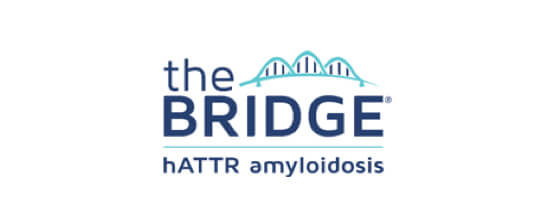hero-section
container inner-hero-section
hero image

mobile hero image

hero content
Diagnosis
timely-diagnosis
container
timely-diagnosis
image arrow
Title
A timely diagnosis is critical
for early intervention1
follow red title content
Patients with hATTR amyloidosis may not receive a diagnosis until 3 to 6 years after symptom onset, resulting in significant disease progression. When diagnosis is delayed, entire families may be affected. Genetic testing is a key step that can help confirm a diagnosis and provide answers for family members at risk.2-5
physician-insights
physican-videos
container
Physician insights
Hear from a neurologist and a cardiologist about their professional experiences in diagnosing hATTR amyloidosis.


three-diagnosis
container
Consider this 3-step process to help ensure an accurate diagnosis.
row
Raise clinical suspicion
- Inquire about a family history of hATTR amyloidosis symptoms
- Look for multisystem dysfunction
- Consider further evaluation of patients with carpal tunnel syndrome, biceps tendon rupture, or spinal stenosis4,6-8
- Reevaluate previous diagnoses for conditions with similar symptoms, especially for patients who continue to worsen or who do not respond to treatment
Some common misdiagnoses include
- Chronic inflammatory demyelinating polyneuropathy (CIDP)1,5
- Amyotrophic lateral sclerosis (ALS)9
- Diabetic polyneuropathy4,5
- Idiopathic polyneuropathy5
- Lumbar spinal stenosis10
- Charcot-Marie-Tooth (CMT) disease5
- Alcoholic neuropathy4
- Hypertensive heart disease11
- Hypertrophic cardiomyopathy11
- Fabry disease4
- Other types of amyloidoses1,4,12-14
Identify the signs through diagnostic tools4,12,a
Several types of assessments are available to help identify the signs of hATTR amyloidosis.
Sensory-motor assessments
- Electromyography (EMG)
- Nerve conduction study (NCS)
Autonomic assessments
- Heart rate deep breathing
- Tilt table
Cardiac assessments
- Electrocardiography (ECG)
- Echocardiography (Echo)
- Cardiac magnetic resonance imaging (CMRI)
third-colum bg-gray
Establish a diagnosis4,15,a
To establish the presence of amyloid:
- Nuclear scintigraphic imaging (99mTc-PYP or 99mTc-DPD)
- Tissue biopsy + Congo Red (e.g., fat pad, heart, nerve)
To confirm a TTR variant:
- Genetic testing
helpful-resources
container
Resources for your patients
Patient Resources
Family Resources
Information and Support Groups
section section-References grey-bg
section section-References grey-bg
References-container container
References
References:
- Conceição I, González-Duarte A, Obici L, et al. J Peripher Nerv Syst. 2016;21(1):5-9.
- Swiecicki PL, Zhen DB, Mauermann ML, et al. Amyloid. 2015;22(2):123-131.
- Waddington Cruz M, Schmidt H, Botteman MF, et al. Amyloid. 2017;24(suppl 1):109-110.
- Ando Y, Coelho T, Berk JL, et al. Orphanet J Rare Dis. 2013;8:31.
- Adams D, Suhr OB, Hund E, et al. Curr Opin Neurol. 2016;29(suppl 1):S14-S26.
- Sperry BW, Reyes BA, Ikram A, et al. J Am Coll Cardiol. 2018;72(17):2040-2050.
- Carr AS, Shah S, Choi D, et al. J Neuromusc Dis. 2019. doi:10.3233/JND-170348.
- Adams D, Koike H, Slama M, et al. Nat Rev Neurol. 2019:15(7):387-404.
- Goyal NA, Mozaffar T. Neurol Genet. 2015;1:e18.
- Adams D, Ando Y, Beirão JM, et al. J Neurol. 2021;268(6):2109-2122.
- Ruberg FL, Berk JL. Circulation. 2012;126(10):1286-1300.
- Shin SC, Robinson-Papp J. Mt Sinai J Med. 2012;79(6):733-748.
- Cortese A, Vegezzi E, Lozza A, et al. J Neurol Neurosurg Psychiatry. 2017;88(5):457-458.
- Kapoor M, Rossor AM, Jaunmuktane Z, et al. Pract Neurol. 2019;19(3):250-258.
- Gertz MA. Am J Manag Care. 2017;23(suppl 7):S107-S112.







